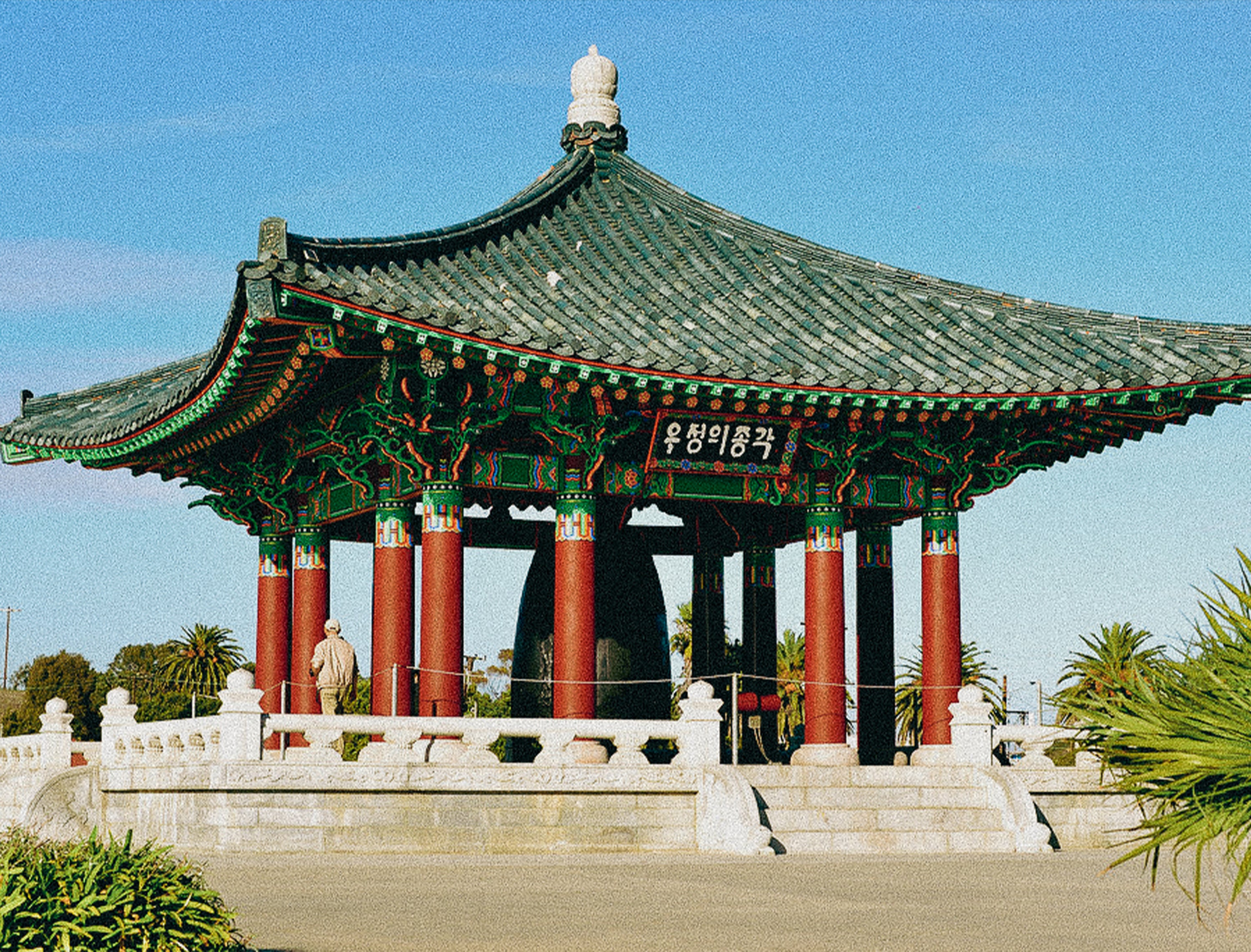When we talk about Korean history, we often think of the events that took place in Korea itself. However, much of Korea's rich culture and history can be found elsewhere - and you can even still visit some of these places! With this in mind, we have compiled a list of some places here in America that have strong ties to Korean and Korean-American history.
1. Korean Friendship Bell
The Korean Friendship Bell and pavilion has long been noted to be a beautiful landmark in Los Angeles. It was donated in 1976 to the people of Los Angeles by the people of the Republic of Korea to celebrate the bicentennial of the U.S. independence, honor veterans of the Korean War, and to consolidate traditional friendship between the two countries.
Its intricate design includes four pairs of figures, each pair consisting of the Goddess of Liberty holding a torch, and a Korean spirit. Each of the Korean spirits holds up a different symbol: a symbolic design of the Korean flag; a branch of the mugunghwa, Korea’s national flower; a branch of laurel, symbol of victory; and a dove of peace.


2. Ahn Family House
The Ahn Family House was residence to the wife and five children of Dosan Ahn Changho, a Korean patriot, educator, social reformer, and statesman. Ahn and his wife Helen are known for being the first Koreans to legally immigrate to America as a married couple. The family previously lived in San Francisco and Riverside before settling in Los Angeles in 1914.
Though Dosan Ahn Changho’s family remained in Los Angeles, Ahn relocated to Shanghai to serve as a minister in the newly formed Korean Provisional Government following the March 1, 1919 uprising. Helen Ahn and her children continued living in the house from 1937-1946. Their home served as a central gathering place for the early Korean American community and is now a part of the USC campus, where it is home to the Korean Studies Institute. The Ahn Family House has also been given historic status by the city of Los Angeles for its architectural style and history.

3. Pachappa Camp
Pachappa Camp is the little-known location of the first Koreatown in America. Initially known as Dosan’s Republic, it was founded by Dosan Ahn Changho in Riverside sometime in late 1904 or early 1905. The family-based community was self-organized and governed, and the settlement’s members were known for their strong sense of community via the sharing of family-based values and lifestyles. Residents even worked alongside the Calvary Presbyterian Church to establish a mission at the settlement, where English classes, social and cultural exchanges, and church services were provided for its members.
Though the area has been redeveloped, with few physical reminders of its existence, Pachappa Camp has been cited by historians as the birthplace and center of the early Korean American community and the Korean independence movement.

4. Korean Friendship Society
The Korean Friendship Society (Chinmokhoe/친목회) - later known as the Mutual Assistance Society and the Korean National Association - was an organization founded by Dosan Ahn Changho in San Francisco. It was the first group organized exclusively for Koreans as well as the first Korean political organization in the United States. The first Korean newspaper in America was also started here. In later years, the organization became the official home front for the Koreans in the United States until the end of World War II.

5. Dosan Ahn Changho Mural
Right in the heart of Koreatown, Los Angeles, is a mural of Dosan Ahn Chang-ho, painted by artist Joseph Lee right on the corner of Olympic Blvd and Vermont Ave. This project was led by us at KORE, who wanted to create a permanent reminder of Dosan Ahn Changho’s legacy. Many are unaware of Dosan Ahn Changho’s achievements and his work fighting for Korean independence as well as advocating for Korean-Americans, and the mural serves as a permanent reminder of his impact.
The mural is on display at 1053 S. Vermont Ave, which was previously the same address as the church where Dosan Ahn Changho frequently held meetings with Korean immigrants.

Dosan Ahn Changho was known for his work as a Korean independence activist. Find out more about the Korean independence movement in our blogs:
5 Facts You Need To Know About The March 1st Movement
Why We Recognize March 1st Every Year...



Leave a comment